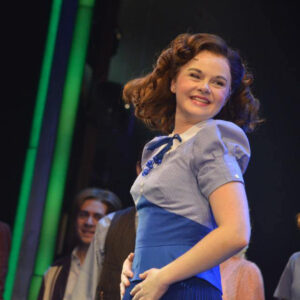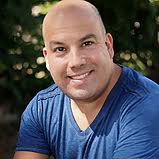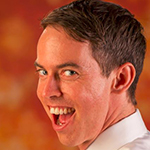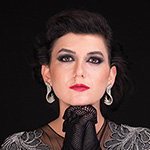Chasing Rainbows: The Road to Oz
Paper Mill Playhouse, Millburn, NJ, October 6, 2019
Reviewed by Chip Deffaa for Cabaret Scenes

I’ve been seeing shows at Paper Mill Playhouse since the 1970s. Their current offering, Chasing Rainbows: The Road to Oz, boasts an exceptionally appealing cast. This is one of those rare productions where even the smallest roles are vivid. The show itself is not perfect. There are fixes that need to be made, which I’ll address shortly. But there’s a million dollars worth of talent on that stage, as well as some some moments that are so wonderfully rewarding, I’d encourage you to buy tickets if you can get them. The show has a future.
The cast mixes seasoned pros with newcomers, and there’s a lot to love. Chasing Rainbows tells the story of Judy Garland’s early years, from her birth to her great triumph in The Wizard of Oz, using songs from Garland’s era. The cast is a joy from start to finish. Let’s start with some supporting roles. Karen Mason—every inch a star—is perfect as Louis B.
Mayer’s secretary. She’s always had one of the greatest voices around. She’s a top-tier cabaret artist, and I’ve had the pleasure of seeing her in starring roles on Broadway in Sunset Boulevard (first-rate—she made me cry), Mama Mia, Wonderland, and at Westchester Broadway Theatre in Gypsy. Her silvery voice is always a joy to hear, and she performs with authority. I wish there was more for her to do; someone ought to be writing starring roles in musicals for her; but they’re lucky to have her in this one.
Max von Essen, another highly respected artist, is wisely cast as Judy Garland’s father; his beautiful, sensitive tenor voice is put to good use here. Stephen DeRosa (whom many will remember as Eddie Cantor in HBO’s Boardwalk Empire) is a treat as Louis B. Mayer. These are well-known theater people taking the stage with flair in supporting roles. And I can’t leave out Kevin B. McGlynn as George Jessel.
There are younger artists who make their moments count, too—Sophie Knapp as a very little “Baby Gumm” and Violet Tinnirello as a relentlessly, insufferably cute Shirley Temple. Good fun!
Michael Wartella—new to me—portrays Mickey Rooney like a brother. I wish Mickey were still alive to witness this dazzling evocation of him. I wish Mickey’s widow, Jan Rooney, could see the show, too; someone ought to invite her. I remember Mickey telling me bitterly one time, late in his career, that he sometimes felt life had passed him by, that his fans had all forgotten him. But Wartella captures Rooney’s brash energy endearingly—singing, chatting, drumming, tap-dancing with brio; it’s an unforgettable turn.
Finally, playing with strength, verve, and confidence the demanding key role of Judy Garland, there’s Ruby Rakos. She is not exactly an unknown. Some will remember her good work in Billy Elliot on Broadway, for example. But this is a breakout role for her, and she makes the most of the opportunity. (I’m glad I had a chance to briefly tell her—and also her mom, Katie Kearns—how much I’d enjoyed her work.)
The show itself needs work if it’s to eventually make it to Broadway as I hope will be the case. But there is so much that is already just right, and so much I enjoyed greatly. (Thank you, director/choreographer Denis Jones for the freshest tap-dancing number I’ve seen in a long time).
I just wanted to recommend this show now. It added to the fun to see so many talented people in the audience, enjoying the show—from cabaret-king Michael Feinstein to Garland’s daughter Lorna Luft, to the hottest young singer in the nightclubs today, Seth Sikes. I’m glad I got to go.
But there are problems with the book, song choices, and arrangements that need to be addressed if the show is to reach its full potential. The opening scenes won me over entirely. The Gumm sisters (the youngest, Baby Frances Gumm, will later use “Judy Garland” as her stage name) are performing in small-time vaudeville with dreams of success in Hollywood. The first two numbers, “Shooting High” and “Going Hollywood” help get the show off to a rousing start. Mark Acito’s libretto wisely mixes the optimism of youth with hints and foreshadowing of trouble. The music has been adapted by David Libby, who’s done the arrangements and provided some additional new music. The show was conceived by Tina Marie Casamento, who has also provided some additional new lyrics for pre-existing songs.
The show starts off so well, it feels—in the beginning—like an unqualified hit, some of the numbers and some of the scenes are just perfect. But the songs are of wildly varied quality. A musical, ideally, needs to build to a really strong close of the first act, and an even stronger close of the second act. This show’s first act closes with “Everybody Sings.” That’s a second-rate song, not interesting enough melodically or lyrically to do the job being asked of it. The act deserves a stronger close. (I know the Garland canon well; she’s always been one of my all-time favorites. I have videotapes of Garland’s films, including Everybody Sings, and zillions of her recordings. “Everybody Sings”—the undistinguished title song from a cute but lesser Garland movie, did not interest her enough to keep it in her repertoire, and she was an excellent judge of material.) I wish they could find a stronger ending for Act One. But I’d overlook that imperfection if the show as a whole built to a terrifically strong conclusion. It doesn’t. I loved much of the show, but I felt a bit let down by the ending. How you end a show as well as the mood your audience members have as they leave the theater will affect word of mouth. I like much of Chasing Rainbows a lot, but it needs to build to a stronger payoff.
One of the greatest numbers in the Garland repertoire is “You Made Me Love You.” (It was originally introduced by Al Jolson, as were a number of other songs Garland loved; she was a huge admirer of Jolson; she repeatedly scored successes with songs he’d previously made famous by putting her own stamp on the material.) Roger Edens adapted the song for Garland, and her performance of it was sheer perfection. It is frustrating, in this production, to have her sing the introduction that Edens crafted for her (“Dear Mr. Gable, I am writing this to you”) and then turn the song over to others. Let us hear her sing the whole song just as Garland did it, with all of the patter that made audiences take her to their hearts. The Chasing Rainbows creative team may think they’re making the moment bigger by having several people sing the song. By not letting us see Judy Garland in one her defining performances, they’re actually making the moment smaller. A chance to really evoke the Garland magic is diluted.
The arrangements and orchestrations, too often, feel bland and generic.
They’re functional, which may be fine for an early tryout of a show. But they don’t conjure up vividly enough the period or Garland. First-rate arrangements and orchestrations can add so much to a show. Go see the musical Chicago—so brilliantly arranged and orchestrated by the late Ralph Burns. The band will win you over, masterfully establishing the period and the whole feel of the show, even before the first words of any song are sung. Chasing Rainbows starts in the late 1920s, and runs through the 1930s. More can and should be done to evoke the era.
It’s not my intent to be harsh. There is so much that is right with this show already, I’d like to see it reach its maximum potential so it can eventually have maximum impact on Broadway and beyond. There’s a lot to love at present, and the cast is excellent.
With a little more work, this show could be so much more.





